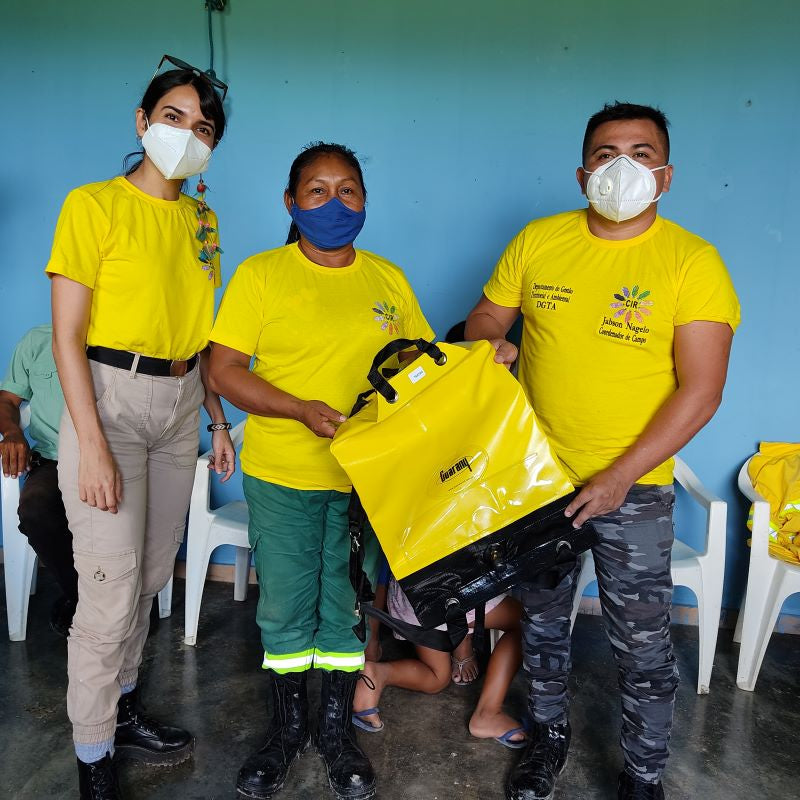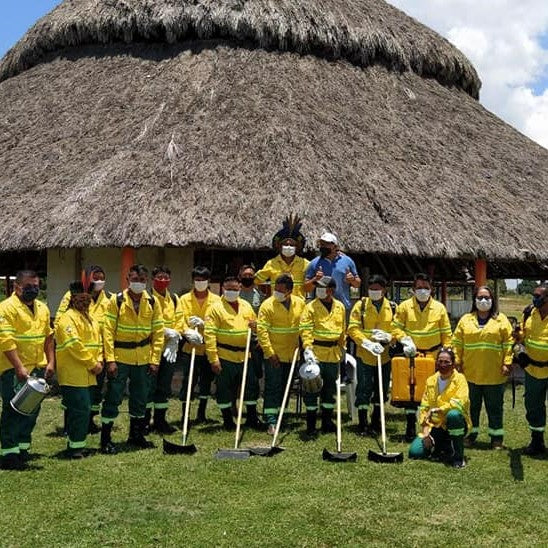Fight fires in the Amazon
Read more
Why buy this Fight fires in the Amazon gift?
- The climate crisis affects all of us. By providing tools to fire fighters in the Amazon, they are able to protect the Amazon against the increasing threat of fire.
- Your gift can provide tools, such as hoes, sickles and hammers which enable the indigenous fire brigade to manage the land, preventing fires from starting or spreading.
- This charity gift is perfect for the climate heroes in your life, by standing in solidarity with the climate heroes in the Amazon.
Case study: Firefighting in the Amazon
“When they didn’t have these tools, the communities survived however they could, and some disasters occurred – destroying communities’ crops and animals” Jessica, Environmental Coordinator in Brazil
Jessica is an environmental Coordinator from Brazil. She works with indigenous groups to stop the spread of catastrophic fires that are on the increase due to intense and prolonged periods of drought caused by the climate crisis.
She works alongside mums like Paula, an indigenous firefighter. Paula prevents fires from spreading by training communities on the importance of small, controlled fires and how to manage their land safely. Paula and her team have access to CAFOD-funded tools such as hoes, sickles and hammers to make their land management even easier.
Jessica said: "These teams need these tools to do fire prevention work. They use these tools to manage the land, especially around hills, so that fires don't spread rapidly up or down hill. They do it around the community so that fires don't spread to their crops."
This gift is part of our Education fund.
View all our Education gifts
Why buy this Fight fires in the Amazon gift?
- The climate crisis affects all of us. By providing tools to fire fighters in the Amazon, they are able to protect the Amazon against the increasing threat of fire.
- Your gift can provide tools, such as hoes, sickles and hammers which enable the indigenous fire brigade to manage the land, preventing fires from starting or spreading.
- This charity gift is perfect for the climate heroes in your life, by standing in solidarity with the climate heroes in the Amazon.
Case study: Firefighting in the Amazon
“When they didn’t have these tools, the communities survived however they could, and some disasters occurred – destroying communities’ crops and animals” Jessica, Environmental Coordinator in Brazil
Jessica is an environmental Coordinator from Brazil. She works with indigenous groups to stop the spread of catastrophic fires that are on the increase due to intense and prolonged periods of drought caused by the climate crisis.
She works alongside mums like Paula, an indigenous firefighter. Paula prevents fires from spreading by training communities on the importance of small, controlled fires and how to manage their land safely. Paula and her team have access to CAFOD-funded tools such as hoes, sickles and hammers to make their land management even easier.
Jessica said: "These teams need these tools to do fire prevention work. They use these tools to manage the land, especially around hills, so that fires don't spread rapidly up or down hill. They do it around the community so that fires don't spread to their crops."
Choose a delivery option
Choose a card design
Couldn't load pickup availability





